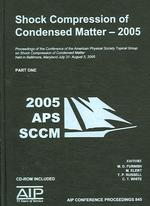Description
Metal Sulfide Nanomaterials for Environmental Applications presents the fundamentals necessary to understand the latest developments and possibilities of applied use, specifically for chemical detection/sensing and monitoring in air, soil, and water matrices as well as for chemical reaction engineering purposes (conversion, photocatalysis, adsorption) to facilitate removal of pollutants. Organic contaminants, volatile organic compounds, and heavy metals pose long-term threats to natural ecosystems and human health. Particularly in the last decade, metal sulfide nanomaterials have piqued researchers' interest due to their outstanding physicochemical characteristics that make them amenable to modulation, as well as their qualitative and quantitative structure–activity relationship.- Offers up-to-date, state-of-the-art information on metal sulfide nanomaterials- Takes advantage of a structured and comprehensive approach to seamlessly combine theory and practical applications- Focuses on usability for environmental remediation, making its contents extremely valuable- Conceptualizes future implications at the end of each chapter
Table of Contents
Part 1. Fundamentals of Metal Sulfide Nanomaterials2. Substitutional structural modifications and optoelectronic properties of metal sulphide 3. Defects and band gap engineering in metalsulfides heterostructure nanomaterials4. Conventional synthetic routes and structural characterization of metal sulphide nanomaterials5. Advances in biogenic synthesis of metal sulfide nanomaterialsPart 2. Detection and Monitoring of Environmental Pollutants6. Metal sulfide nanomaterials for gas sensing7. Metal sulfide-based electrochemical sensors for the detection of organic water contaminants8. Metal sulfide nanomaterial composites for electrochemical detection of heavy metal ionsPart 3. Removal of Environmental Pollutants9. Interface dynamics in metal sulphides and metal oxides for photodegradation of organic contaminants10. Carbon-metal sulfide nanomaterial photocatalysts for environmental remediation11. Metal sulfide nanomaterial-based photocatalysts for remediation of gaseous air pollutants12. Hybrid metal sulfide nanomaterials for the removal of heavy metal water contaminants13. Recent advances in metal sulphide nanomaterials for antimicrobial activity and disinfection self-cleaning14. Advances in sulfur-doped nanomaterials for environmental remediation







